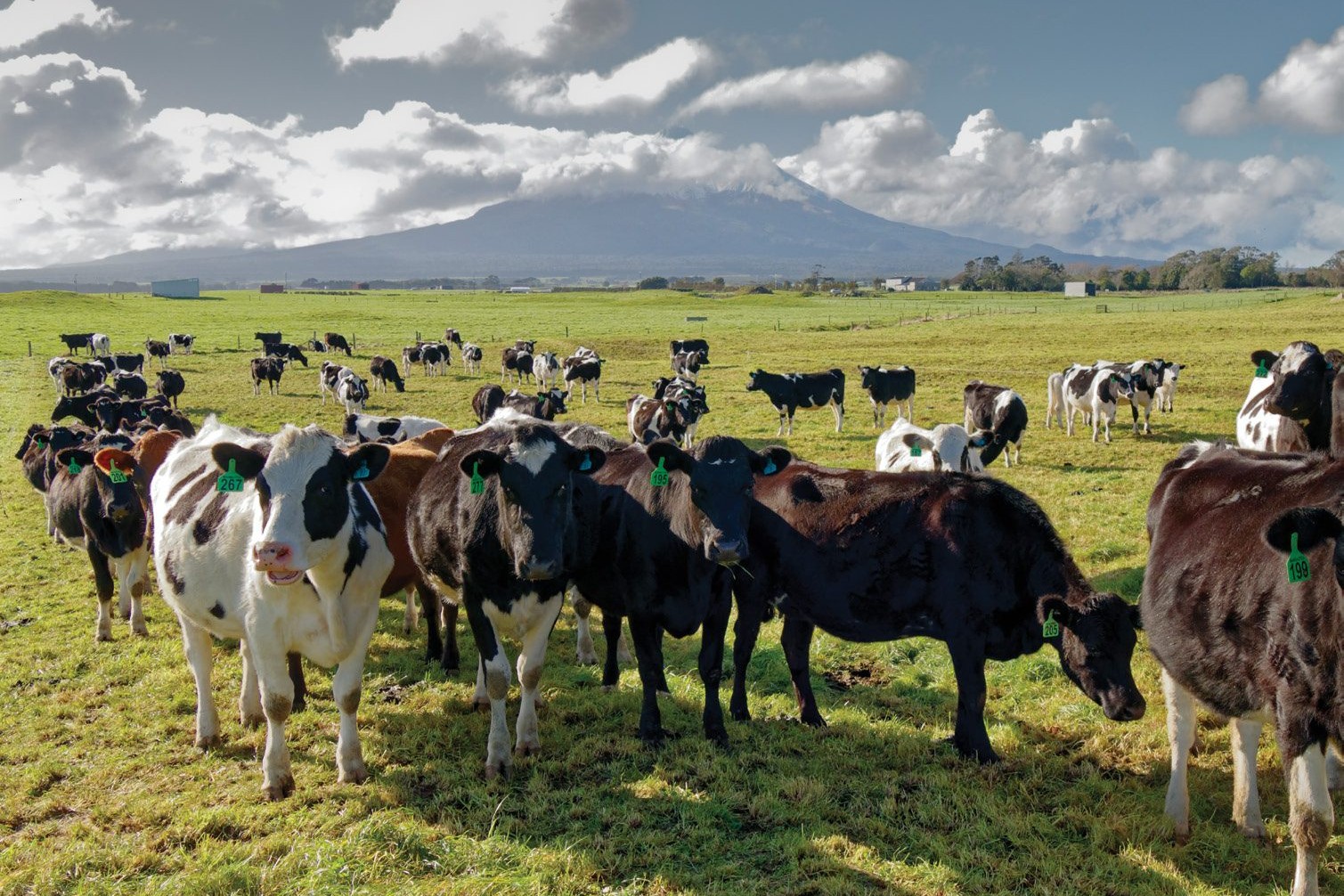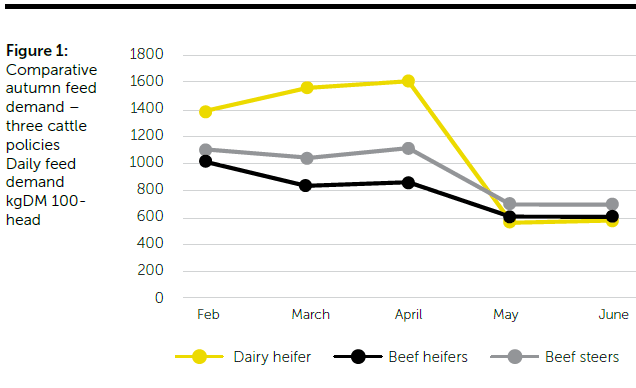Autumn bonus needed for grazing
Farmers who buy beef calves for finishing may also be interested in growing on dairy heifers farm consultant Graham Butcher writes.

Farmers who buy beef calves for finishing may also be interested in growing on dairy heifers farm consultant Graham Butcher writes.
Using today’s parameters on pricing and using “standard” stock policies for southern New Zealand we can get a perspective on how dairy heifer grazing fits into southern farms. Right now, dairy heifer grazing has a gross margin of 18.3c/kg drymatter (DM) consumed which is about the same as a sheep flock doing 140% with 50% hogget lambing.
So, both are comparatively good margins. Not much incentive for a sheep farmer to alter policies at this higher level of performance. At 135% and no hogget mating we can achieve about 16c so some motivation here to look at dairy support.
Those who buy beef calves for finishing may also be interested in dairy heifers. Assuming our “standard” trading policies for autumn beef calf purchase, we can achieve about 14.5c/kg DM for both heifers and steers. There’s a little more motivation to look at changing cattle policies and they are both young cattle coming on and leaving finished. On the surface they appear to be similar policies.
Breeding cows are sitting at between 10c and 12c/kg DM consumed. This is just added for some perspective, we can’t substitute breeding cows for dairy heifers. But we need to note that breeding cows consume lower quality feed, groom pastures and make use of areas that sheep struggle with. None of these are taken into account with our 10c to 12c.
Do dairy farmers have waiting lists of folk wanting to graze their stock? Probably not, it’s more likely they have issues with finding heifer grazing to their satisfaction. Intensification rules haven’t helped recently but even before these rules became an issue, I don’t think dairy farmers had waiting lists.
I believe one of the reasons, perhaps the main reason, is the impact dairy heifers have on autumn feed budgets.

Autumn feed pressure
The structure of grazing contracts is usually 100kg calves come on board in December for a grazing fee of $8.50/wk. On May 1 for the next 12 months there’s a $12.50/wk fee. This is what our 18.3c margin is based on. If we compare feed demands with say autumn buying of beef calves, two things happen.
First, dairy heifer calves are on board from December, three to four months before beef calves.
Secondly, in the autumn, beef calves are cleared on average earlier than the dairy heifers. All R2 dairy heifers are there until April 30. While we will still a have R2 beef animals on board at the end of April, we should have managed to send a reasonable proportion to the works prior to this date. This has a significant effect on autumn feed demand.
In southern NZ, autumn is a critical period where build up of pasture cover is critical for managing the winter. I don’t know how many times I’ve heard how much an R2 in-calf heifer can eat.
To put some figures around this problem, figure one shows the daily feed demand from three stock policies (dairy heifers, autumn beef steer and heifer calf purchase) from February through to June, our critical period.
Figure 1 details the daily feed demand from our “standard” dairy heifer policy compared to buying and finishing beef animals. Each policy is for 100 cattle and it’s just one average scenario to illustrate the point. There’s a considerable amount of detail that has gone into these lines and if anyone wants this detail I’m happy to provide it.
For about three months, we have about 350kg DM/day increase in demand compared to beef calf finishing – that comes to just over 31,000kg DM – because of the structure of heifer agreements. On top of this, we also have the dairy heifers coming on earlier. The December/January period should be easier to manage though, calves are small and they are there when feed supply is less critical, (except for this very dry year!)
Graziers should make provision for this altered feed demand in the autumn. In the calculation of the gross margins, I have included a cost for 4ha of summer turnips to feed out to 100 R2 heifers. Note though, we still get a reasonable 18.3c return. What is not taken into account is the effect of 4ha less for winter and spring (turnip stubble). Simple enough to manage the autumn but there are flow-on costs. Could possibly use a leafy turnip or rape and carry some feed into winter, but still a cost involved.
So, even going from beef calf finishing to dairy heifer grazing we still have the autumn issue. If we want to substitute sheep with dairy heifers, the same constraint will apply in the autumn, high feed demand from dairy heifers and declining grass growth coupled with wanting to flush ewes and build autumn grass cover.
Some things need to happen. Dairy farmers need to recognise the grazier’s autumn issue as a constraint and graziers need to recognise that well-grown in-calf heifers are important to future production for the owner.
There could be a win/win position here if a performance bonus was available for achieving April 30 weights. It needs to be enough to encourage policy changes such as summer turnips or paying more attention to weight and feeding year-round.
My suggestion is to have heifer grazing contracts structured into three periods rather than two. The May to April period at $12.50 could be split into a May to February period (remaining at $12.50) with March and April at $12.50 plus a premium of $4.00/wk but only if target 30th April live weight is achieved.
This should attract competent graziers and reward them adequately for their management efforts. Dairy farmers will gain from well grown heifers, so a win/ win position for both parties. We would likely see more stable grazier/owner relationships.
- Graham Butcher is a farm consultant based in Gore.




